Lockheed Super Constellation walkaround — elegance in red stripes (Part I)
Lockheed Super Constellation walkaround — elegance in red stripes (Part I)
47° 31′ 09″ N / 122° 18′ 00″ W
Is there is an aircraft more elegant than Lockheed’s Constitution? It is difficult to think of one other than the “Connie”, if there is one. The long slender fuselage paired with a high performance wing (scaled up from the Lockheed P-38 Lightning) and characteristic triple tail is certainly a hard combination to beat. What better than the Connie — well, the “Super Connie” of course. The Super Constellation was a bit longer, carried much more fuel and had more powerful engines — the example photographed in this series of posts is a Lockheed L-1049G Super Constellation in the piped colors of Trans-Canada Air Lines (known now as Air Canada, the name it has always been known in French) located in the air park of the Museum of Flight. Four powerful Wright R-3350 Duplex-Cyclone twin row radial engines powered this Super Connie. These engines are rated at 3400 hp/2535kW and have 18 cylinders divided evenly in twin rows. The engine is as elegant in design as the Super Connie is in appearance with its turbo-compound design collecting and utilizing the conventionally wasted power of the exhaust gas force. Cruising at 305 mph/491kph and ranging as far as 4140 miles/6650km with 50–120 passengers the Connies began to usher in the age of affordable air travel. Connies and Super Connies mark the conclusion of reciprocating engine powered major airline aircraft, along with the Douglas’s DC-6 and DC-7 aircraft, but what a lovely conclusion to this era was made by the Constellations!
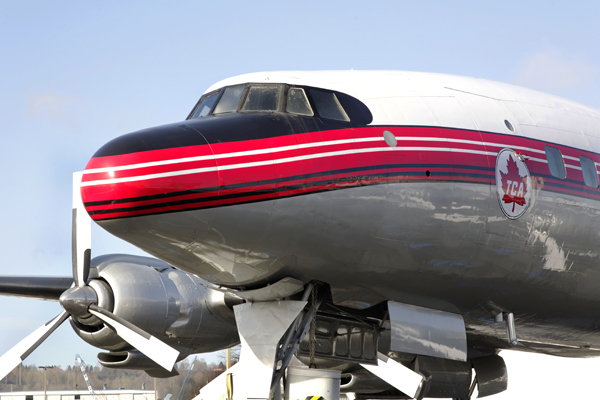
Lockheed Super Constellation’s flight deck and note the small panel alongside the fuselage which is part of the nose gear landing gear door system — photo by Joseph May
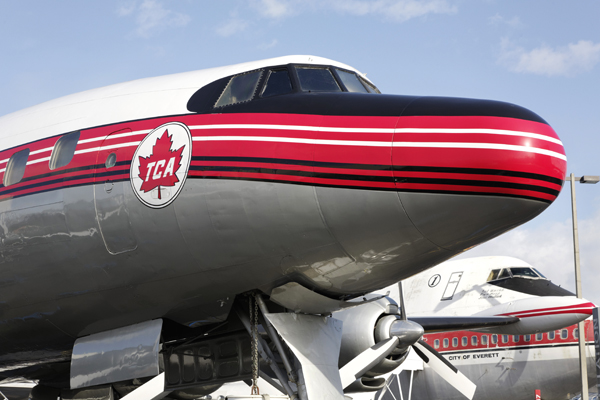
Canada’s flag carrier early on was Trans-Canada Air Lines (the English name from the beginning while known always, in French, as Air Canada, by which it is now known) and always has used the red maple leaf — photo by Joseph May
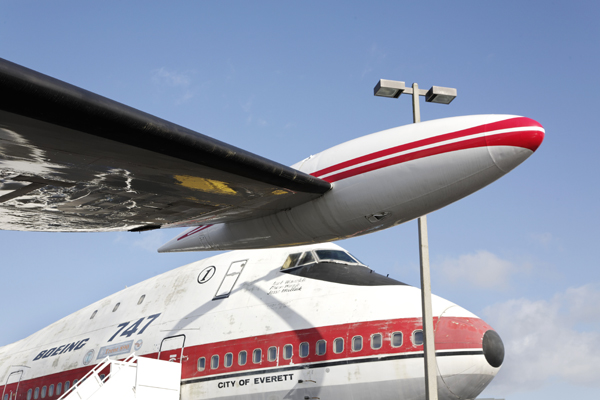
Lockheed Super Constellation’s wingtip tanks increased total fuel capacity by ~67% with each tank having a capacity of 1037 gallons/3925L — photo by Joseph May
More of this Super Connie in Wednesday’s and Friday’s posts 🙂
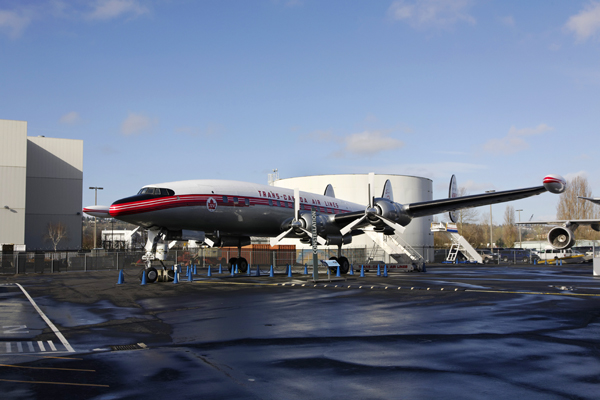
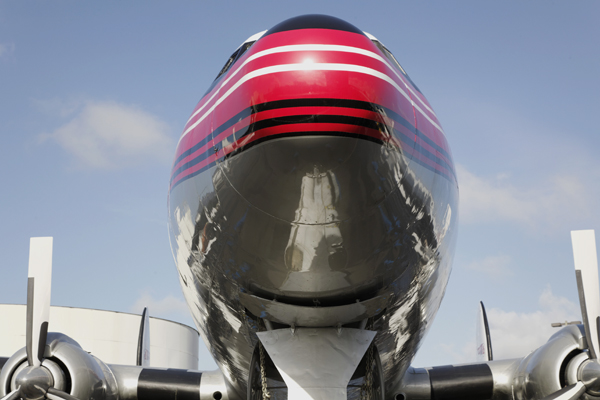
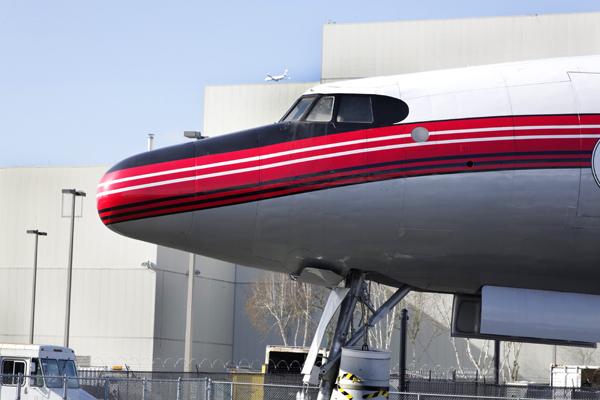

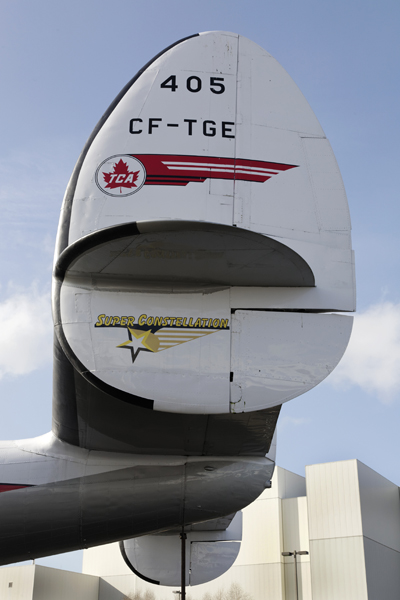
They were also used as ” hurricane hunters ” flying out of Jacksonville Florida in the early sixties. Beautiful in flight.
Lucky you! I’ve never seen one fly but seeing one airborne must have been majestic 🙂
What a beautiful paint scheme…I’m surprised there aren’t more GA and corporate aircraft with variations of it…(at least that I’ve seen….great contrast…and simple
You have me thinking about your point and I quite agree with you. When I saw the air park on the first day it was obvious that morning shots would be best unless it was a suitably cloudy day (for diffused light). Fate was smiling though on the day I went to photograph and I had a bright sun plus no interfering shadows from the nearby building — so the red stripes combined with the overall white really popped and got down to photographing as quickly as I could! As an opportunistic photographer I am a slave to the light 😉
It cannot be easy to work in the situation where you are at nature’s whim and where time is a factor!…..but I think , looking back at many of your prior images you do incredibly well.
I have less of a problem with composition/contrast color because I can mix, alter, enhance and even change the perspective in my mind and on the palette before touching canvas!!
:-)… You also have a lot of situations where close detail is required too which complicates things.
I do use what I call my “brainless wonder” camera to take my study images prior to painting …which can at best can only be described as “down and dirty”; :-)…used mainly for insuring accuracy…especially of graphics , empennages etc.
From an Art standpoint, your end result depends on many factors that have to be made instantly which is more difficult . What kind of camera(s) and lenses do you have and use?
Thanks for the compliment. When I scout my photos I’ll often make notes as to whether they are morning or afternoon shots if the sun’s direction will be important. I’m using an EOS 5D and either a 24-105mm lens or a 14mm lens (that is the fun lens). I cannot draw so my camera needs are great 😉